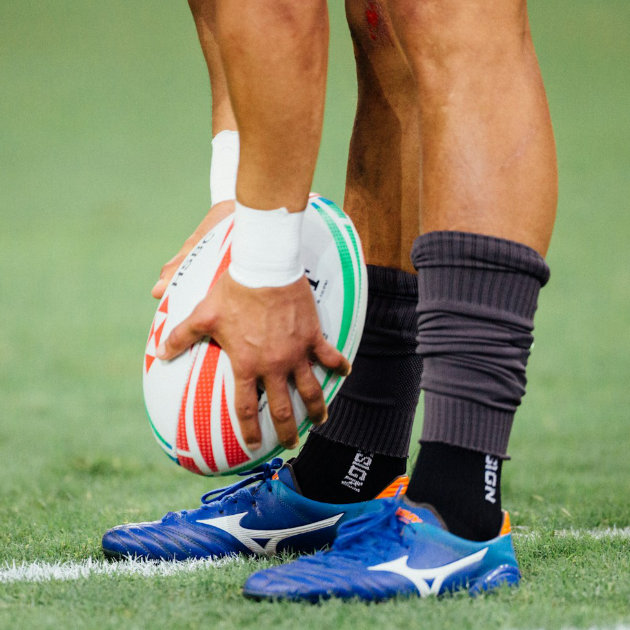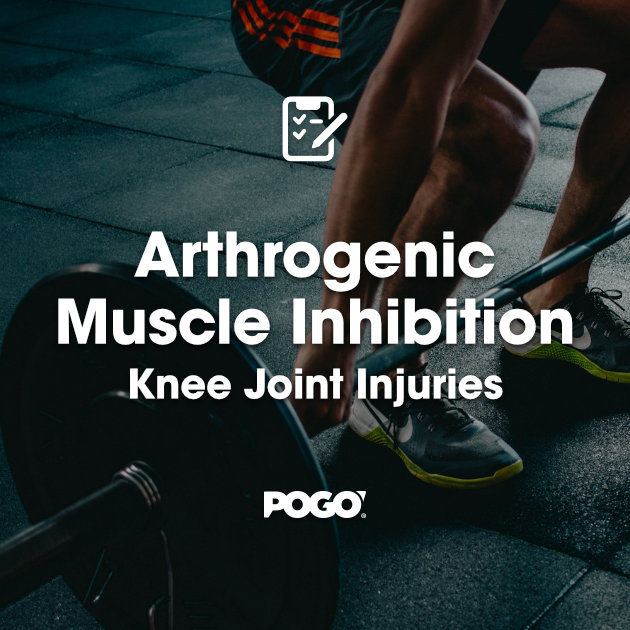Hip Labral Tears: What Athletes Need to Know

If you’re an athlete dealing with nagging hip or groin pain that won’t go away, your hip labrum might be the issue. Hip labral tears are a common cause of persistent hip and groin pain, especially in sports that demand quick changes of direction, twisting, sprinting, and deep hip positions such as basketball, hockey, soccer, AFL, dance and in some cases running.
In fact, labral tears are far more common in athletes than most people realise. Research shows that 22% of athletes presenting with groin pain had a labral tear when assessed with advanced imaging (Narvani, Tsiridis, Kendall, Chaudhuri, & Thomas, 2003). Unfortunately, many labral tears are misdiagnosed or treated late because their symptoms often mimic other hip or groin injuries.
The good news? Most athletes return to their sport through a combination of rehabilitation or, when necessary, surgical repair. This article breaks down exactly what you need to know, backed by current research.
What Is the Hip Labrum and Why Does It Tear?
The labrum is a ring of fibrocartilage that lines the edge of your hip socket (acetabulum). Its role is crucial for athletes because it:
- Deepens the socket and improves stability of the ball-and-socket joint (McCarthy, Noble, Aluisio, et al., 2003).
- Absorbs shock and distributes load, reducing stress on the cartilage when running, jumping, or cutting.
- Maintains a suction seal and fluid pressure, which keeps the hip moving smoothly.
When the labrum tears, the hip can become less stable, less efficient, and more painful—often described as “catching” or “locking.”
Why It Tears (The Main Causes)
The causes of labral tears in athletes are typically grouped into four main categories:
- Bony Shape Problems – Femoroacetabular Impingement (FAI):
Subtle bony changes in the femur or acetabulum are strongly linked to labral tears.
Cam impingement (extra bone on the femoral head) and pincer impingement (extra bone on the socket) repeatedly pinch the labrum during hip flexion and rotation, causing degeneration over time (McCarthy et al., 2003). - Repetitive Movements:
Sports that place the hip in repeated deep flexion, rotation, or abduction—like hockey, gymnastics, and dance—create high shear forces that can gradually fray the labrum (Fitzgerald, 1995). - Trauma:
Acute injuries such as falls, collisions, or hip dislocations can cause immediate tears (Fitzgerald, 1995). - Hypermobility or Capsular Laxity:
Athletes with naturally high hip flexibility, such as dancers or gymnasts, are more likely to overstretch the labrum, making it vulnerable to tearing (Burnett, Della Rocca, Prather, et al., 2006).
The anterosuperior labrum which is the front-top section, is the most commonly affected area in athletes (Burnett et al., 2006).
What Does It Feel Like?
The symptoms of labral tears are consistent across sports. Burnett et al. (2006) found that:
- 92% of patients with labral tears reported anterior hip or groin pain, often deep and hard to pinpoint.
- 52% experienced mechanical symptoms such as clicking, catching, or locking.
Common Signs to Watch For
- ✅ Sharp groin or hip pain during twisting, sprinting, or deep hip flexion.
- ✅ Clicking, catching, or locking inside the joint.
- ✅ Pain with sitting for long periods.
- ✅ Stiffness and loss of hip rotation or overall mobility.
If you’re nodding your head reading this, getting assessed early is important—ignoring these symptoms often leads to worsening tears and associated cartilage damage.
How Is It Diagnosed?
1. Clinical Assessment
A skilled physiotherapist or sports physician will start with a thorough history and movement assessment.
The most reliable clinical tests include:
- FADIR Test (Flexion, Adduction, Internal Rotation): Highly sensitive; reproduces groin pain in many labral tears (McCarthy et al., 2003).
- FABER Test (Flexion, Abduction, External Rotation): Pain in the groin suggests intra-articular hip involvement.
- Scour Test: Pain or clicking when the hip is rotated under load can indicate a labral tear.
2. Imaging
While clinical tests are useful, MRI arthrograms remain the gold standard for confirming labral tears because the contrast dye highlights cartilage damage clearly (Fitzgerald, 1995; McCarthy et al., 2003). X-rays or CT scans may be used to check for FAI.
Can You Rehab Without Surgery?
Absolutely. Many athletes recover without surgery, especially if there’s no significant bony impingement. Fitzgerald (1995) showed that activity modification and targeted strengthening significantly reduced pain in athletes with labral tears.
Rehab Basics for Athletes
A structured physiotherapy program focuses on reducing hip irritation, restoring stability, and gradually rebuilding sport-specific movement.
1. Unload and Calm the Hip
- Reduce movements that compress the labrum: avoid deep squats, prolonged sitting, and high-impact jumping in the early stages.
- Maintain cardiovascular fitness with cross-training: cycling, swimming, or upper-body conditioning.
2. Build Hip and Core Strength
Strong muscles around the hip protect the labrum by improving joint control. Research supports improving hip stability to reduce joint stress (McCarthy et al., 2003).
Key areas to target:
- Glutes: Hip thrusts, bridges, side-lying clams, and lateral band walks.
- Core Control: Dead bugs, Pallof presses, and anti-rotation planks.
- Single-Leg Stability: Split squats, step-ups, and single-leg RDLs.
3. Fix Movement Patterns
Athletes often develop compensatory patterns that overload the hip. Key corrections include:
- Learning to hinge properly from the hips instead of the lower back.
- Reducing excessive anterior pelvic tilt, which can pinch the front of the hip.
4. Gradual Return to Sport
Once pain-free strength and control return, athletes progress to:
- Running progressions (gradual increase in speed and volume).
- Plyometrics (bounding, hopping, jumping).
- Sport-specific drills (cutting, pivoting, acceleration).
Most athletes respond well to this approach within 3–6 months.
When Surgery Is Needed
Rehab isn’t always enough, especially if structural changes like FAI are present. Robertson, Kadrmas, and Kelly (2007) found that surgery is most successful for athletes with persistent mechanical symptoms or significant bony impingement.
Surgical Options
- Labral Repair: Preferred for younger, active athletes because it restores the labrum’s suction seal and stability (Philippon, 2006).
- Labral Debridement: Trimming frayed labral tissue is considered for degenerative tears or when repair isn’t possible.
- FAI Correction (Osteoplasty): Bone reshaping of the femoral head or acetabulum is often performed at the same time to prevent future impingement.
Return to Sport After Surgery
Outcomes are excellent. Philippon (2006) reported that 80–90% of athletes returned to their previous level of sport after arthroscopic labral repair, usually within 4–6 months.
A typical post-op timeline:
- 0–4 weeks: Protected weight-bearing, pain management, gentle mobility.
- 4–8 weeks: Progressive strengthening of glutes and deep hip rotators.
- 8–12 weeks: Single-leg strength, controlled range of motion.
- 12–20 weeks: Running, agility, and sport-specific work.
The Bottom Line: What Athletes Should Do
- ✅ Don’t ignore persistent hip or groin pain, early assessment leads to better outcomes.
- ✅ Rehab works for many athletes, proper strength and control can reduce pain and protect the hip long-term.
- ✅ Surgery is highly successful when required, provided post-op rehab is followed closely.
The research is clear: whether you manage your labral tear conservatively or surgically, a structured physiotherapy program is key to getting back to sport pain-free and stronger than before.
References
Burnett, S., Della Rocca, G., Prather, H., et al. (2006). Clinical presentation of patients with tears of the acetabular labrum. The Journal of Bone & Joint Surgery, 88(7), 1448–1457. https://doi.org/10.2106/JBJS.E.00629
Fitzgerald, R. H. (1995). Acetabular labrum tears: Diagnosis and treatment. Clinical Orthopaedics and Related Research, 311, 60–68.
McCarthy, J., Noble, P., Aluisio, F. V., et al. (2003). Anatomy, pathologic features, and treatment of acetabular labral tears. Clinical Orthopaedics and Related Research, 406, 38–47.
Narvani, A. A., Tsiridis, E., Kendall, S., Chaudhuri, R., & Thomas, P. (2003). A preliminary report on prevalence of acetabular labrum tears in sports patients with groin pain. Knee Surgery, Sports Traumatology, Arthroscopy, 11, 403–408. https://doi.org/10.1007/s00167-003-0382-z
Philippon, M. J. (2006). New frontiers in hip arthroscopy: The role of arthroscopic hip labral repair and capsulorrhaphy in the treatment of hip disorders. Instructional Course Lectures, 55, 309–316.
Robertson, W. J., Kadrmas, W. R., & Kelly, B. T. (2007). Arthroscopic management of labral tears in the hip: A systematic review. Clinical Orthopaedics and Related Research, 455, 88–92. https://doi.org/10.1097/BLO.0b013e31802b4c7a







